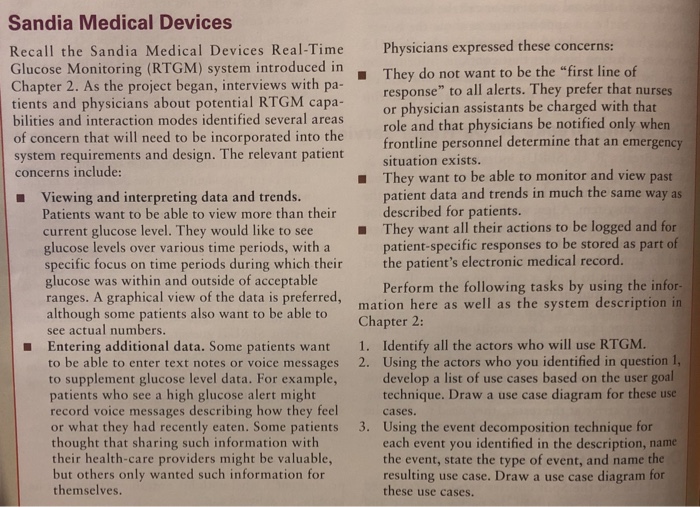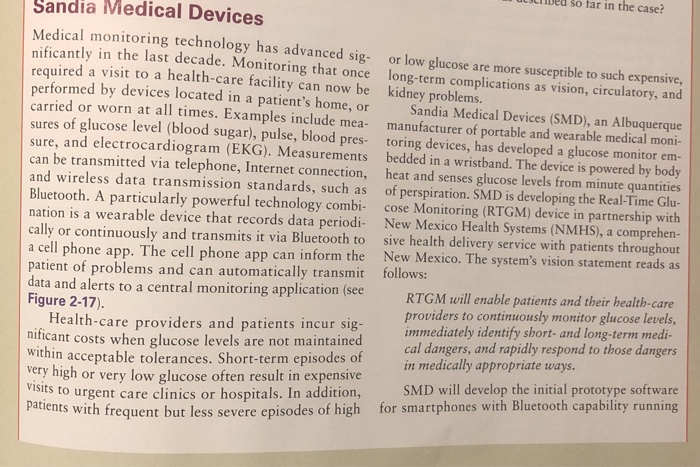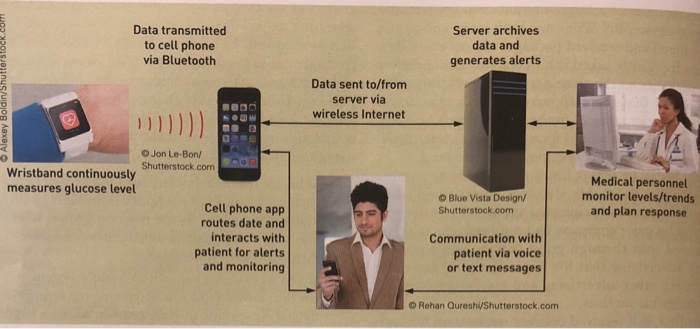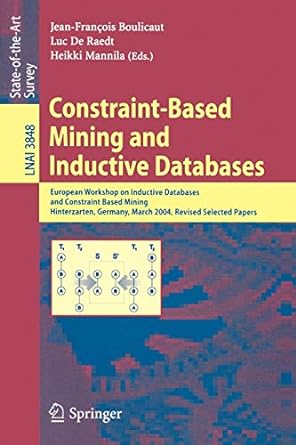Sandia Medical Devices Physicians expressed these concerns: Recall the Sandia Medical Devices Real-Time Glucose Monitoring (RTGM) system introduced in Chapter 2. As the project began, interviews with pa- tients and physicians about potential RTGM capa bilities and interaction modes identified several areas They do not want to be the "first line of response" to all alerts. They prefer that nurses or physician assistants be charged with that role and that physicians be notified only whe frontline personnel determine that an emergency of concern that will need to be incorporated into the system requirements and design. The relevant patient concerns include: situation exists They want to be able to monitor and view past patient data and trends in much the same way as described for patients. They want all their actions to be logged and patient-specific responses to be stored as part o the patient's electronic medical record. Viewing and interpreting data and trends. Patients want to be able to view more than their current glucose level. They would like to see glucose levels over various time periods, with a specific focus on time periods during which their glucose was within and outside of acceptable ranges. A graphical view of the data is preferred, although some patients also want to be able to see actual numbers Entering additional data. Some patients want 1. Identify all the actors who will use RTGM to be able to enter text notes or voice messages to supplement glucose level data. For example, patients who see a high glucose alert might record voice messages describing how they feel or what they had recently eaten. Some patients thought that sharing such information with their health-care providers might be valuable, but others only wanted such information for themselves Perform the following tasks by using the in mation here as well as the system description Chapter 2: 2. Using the actors who you identified in question 1, develop a list of use cases based on the user goa technique. Draw a use case diagram for these use cases. 3. Using the event decomposition technique each event you identified in the description, na the event, state the type of event, and name the resulting use case. Draw a use case diagram for these use cases










